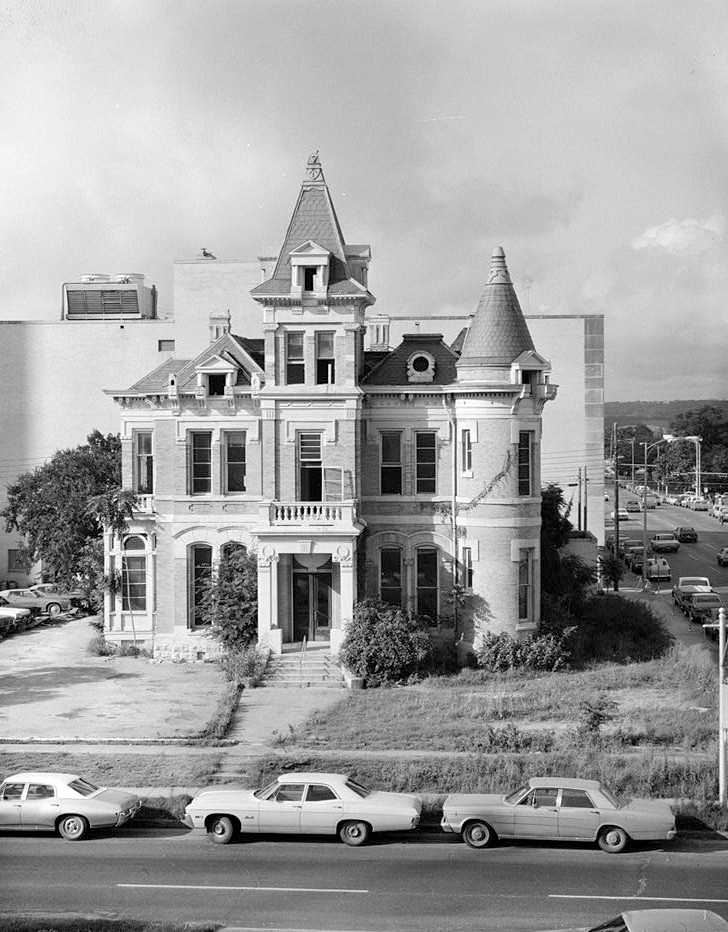John H Houghton House, Austin Texas

The Houghton House was built in the last half of the 1880s by one of the leading families in Austin. John Henry Houghton, who was born in 1847, spent his early years attempting to reclaim the position and wealth his family had lost during the Civil War. He began as a teamster hauling goods from Hempstead, which was the nearest railhead to Austin and Georgetown. After a sucessfull business venture in Georgetown, Houghton moved to Austin where, by the 1879-1880 city directory, he had formed a partnership with J.H. Robinson as "wholesale dealers in wines, liquors, cigars and tabacco." In addition to the lucrative wholesale business, Houghton invested heavily in ranch lands. In the last five years of his life the partnership was dissolved so Houghton could devote his full time to cattle interests and his duties as first vice-president of the American National Bank in Austin. Houghton died in 1910, and upon the death of his wife the following year, the property was inherited by their daughter, Josephine Houghton Allen and her husband, Wilbur Price Allen. Allen was a successful lawyer, banker, rancher, and capitalist. Since the late 1920s, the house has been used for a variety of purposes such as apartments, offices, and shops.
No original drawings or plans have been located. Early photographs do document that the house was L-shaped with an open two-story porch on the inward portion of the L. The iron fence which surrounded the property appears in photographs dating from the late nineteenth century to 1958. The Carriage House was built circa 1890 and was separated from the adjoining yard by a high board fence.
The first-floor plan appears to have originally included the entrance and central hall, flanked on the east side by the stairwell and one room (perhaps a library) and on the vest side by the drawing and dining rooms, to the "back of w^hich were the pantry, service hall, and kitchen. The same room arrangement was used on the second floor, while the smaller third floor contained storage rooms and a playroom.




